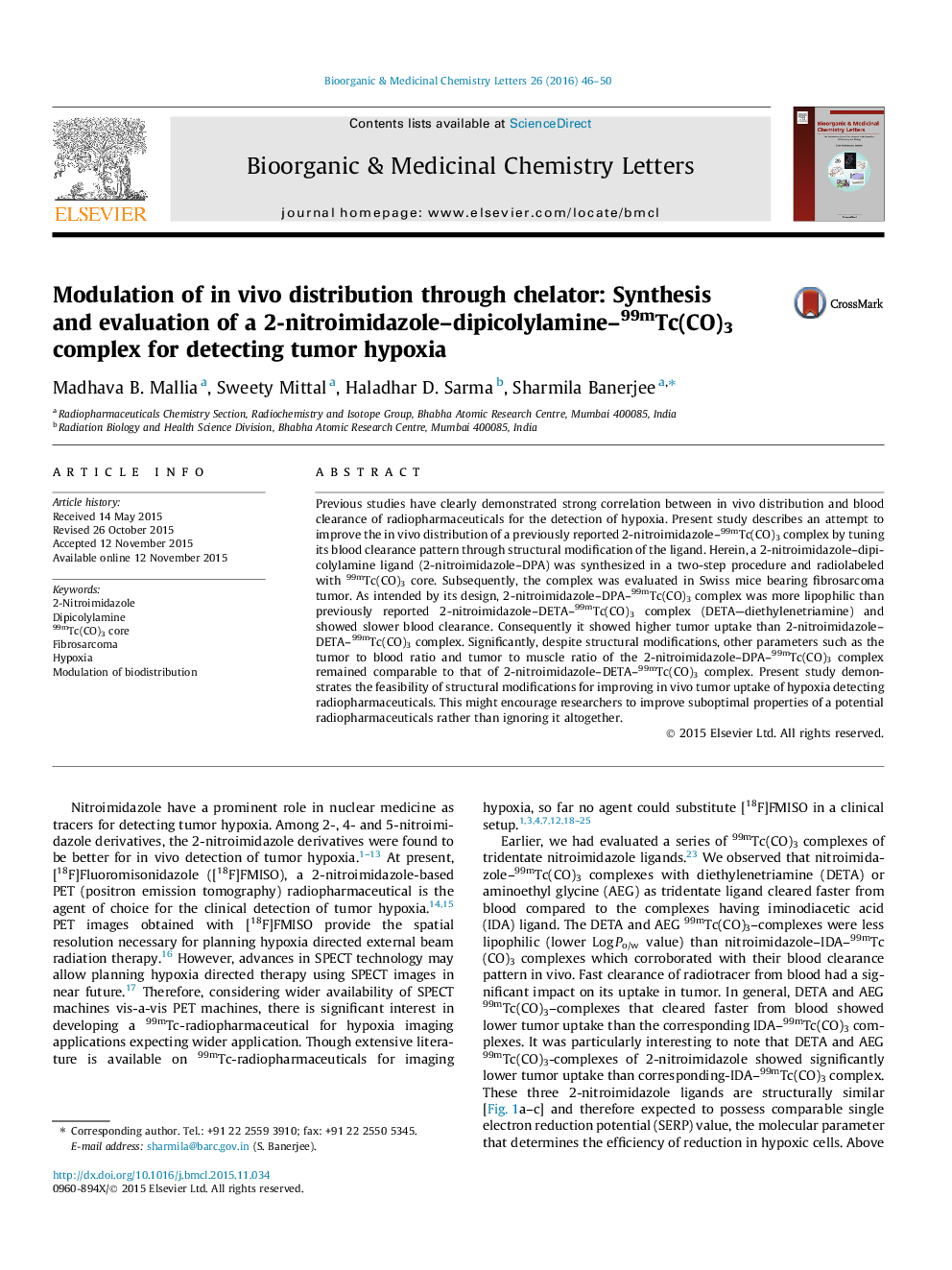| کد مقاله | کد نشریه | سال انتشار | مقاله انگلیسی | نسخه تمام متن |
|---|---|---|---|---|
| 1368787 | 981726 | 2016 | 5 صفحه PDF | دانلود رایگان |

Previous studies have clearly demonstrated strong correlation between in vivo distribution and blood clearance of radiopharmaceuticals for the detection of hypoxia. Present study describes an attempt to improve the in vivo distribution of a previously reported 2-nitroimidazole–99mTc(CO)3 complex by tuning its blood clearance pattern through structural modification of the ligand. Herein, a 2-nitroimidazole–dipicolylamine ligand (2-nitroimidazole–DPA) was synthesized in a two-step procedure and radiolabeled with 99mTc(CO)3 core. Subsequently, the complex was evaluated in Swiss mice bearing fibrosarcoma tumor. As intended by its design, 2-nitroimidazole–DPA–99mTc(CO)3 complex was more lipophilic than previously reported 2-nitroimidazole–DETA–99mTc(CO)3 complex (DETA—diethylenetriamine) and showed slower blood clearance. Consequently it showed higher tumor uptake than 2-nitroimidazole–DETA–99mTc(CO)3 complex. Significantly, despite structural modifications, other parameters such as the tumor to blood ratio and tumor to muscle ratio of the 2-nitroimidazole–DPA–99mTc(CO)3 complex remained comparable to that of 2-nitroimidazole–DETA–99mTc(CO)3 complex. Present study demonstrates the feasibility of structural modifications for improving in vivo tumor uptake of hypoxia detecting radiopharmaceuticals. This might encourage researchers to improve suboptimal properties of a potential radiopharmaceuticals rather than ignoring it altogether.
Figure optionsDownload as PowerPoint slide
Journal: Bioorganic & Medicinal Chemistry Letters - Volume 26, Issue 1, 1 January 2016, Pages 46–50